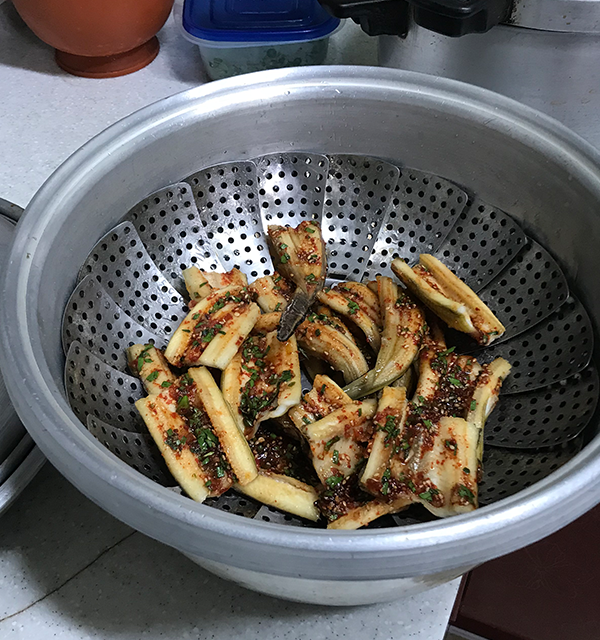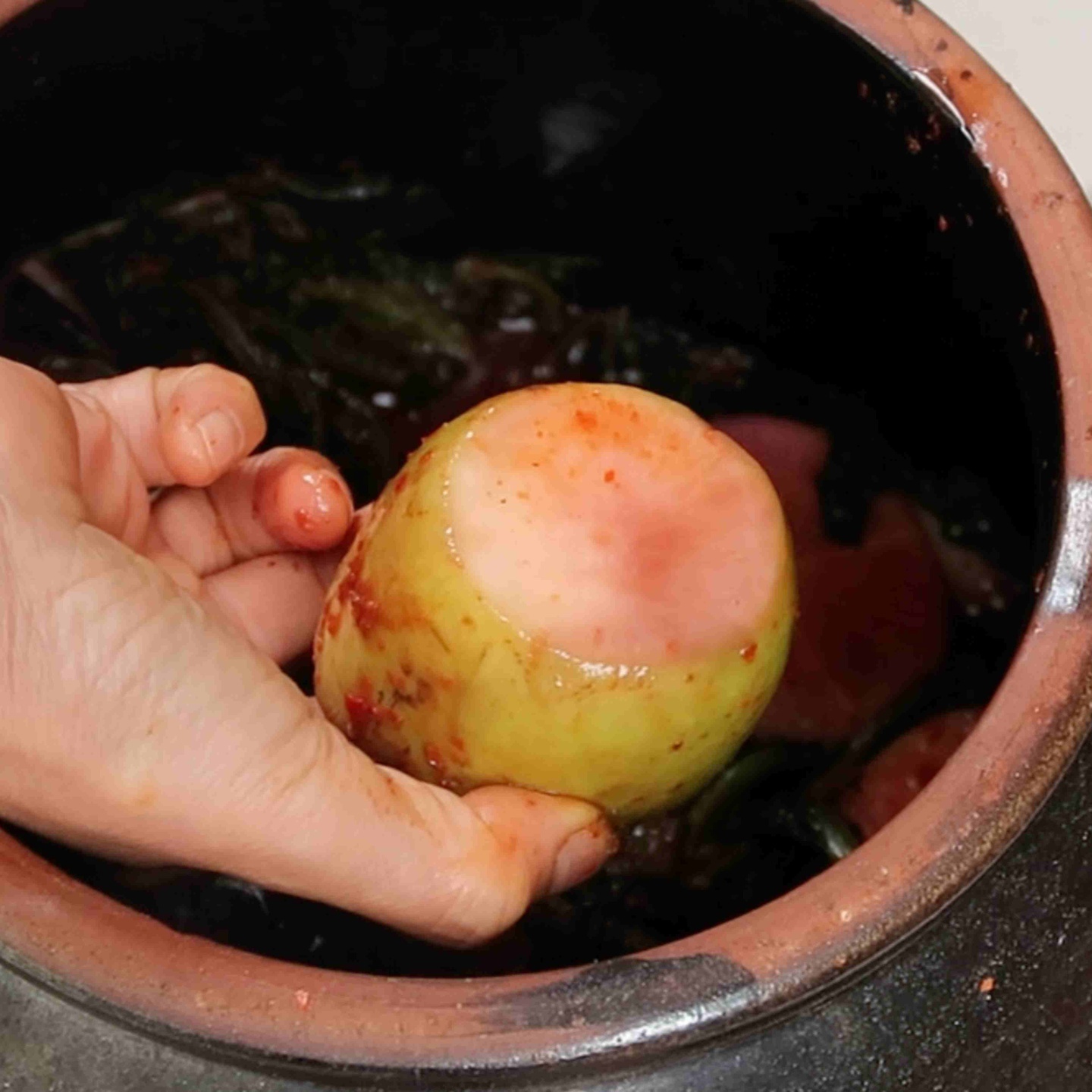What is the difference between a steamed dish using a pot and lid (찜) and a braised dish (조림)?
Korean braised foods (조림) are made by placing ingredients in a medium-sized shallow pot. The ingredients simmer in a liquid until it reduces and there is only a little liquid-like sauce left.
Steamed dishes using a pot and lid (찜) are different.
This method involves putting ingredients into the pot with a seasoned liquid and then covering the pot with a lid. The liquid will reduce until the ingredients are cooked and tender. There will be soup and liquid left after this steamed dish is done; it will not be fully evaporated or thick like a sauce. This cooking method is great for tough cuts of proteins that need to be cooked longer and slower to make tender. You need a thick-bottomed pot when steaming with a pot and lid. If you use a thin bottomed pot, the water will evaporate quickly, and the food can stick or burn to the bottom.
If you are still confused about the difference between steaming with a pot and lid (찜) and braised (조림), then just remember that braised dishes are reduced to a little liquid or a thicker sauce, and steamed have a soup-like liquid left over.
How to Make Delicious Steamed Food Using a Pot & Lid
We want to achieve certain things by making Korean steamed dishes using a pot and lid.
- The vegetables in the dish should be cooked tender but intact (not broken apart).
- Steamed dishes using a pot and lid should have some soup/liquid remaining still once the ingredients are done cooking. The liquid is not supposed to be thickened like a sauce.
- Ideally, the flavor and nutrients of the ingredients are intact because the dish is not overcooked.
- The proteins in the dish should be fully cooked and tender. Tough meat cuts can be used in this method because it is simmered for some time.
- Another important aspect is that there is no strong aroma from the meats used.
- Finally, when you steam, the ingredients should have absorbed some flavor and be flavorful.
Preparations for Pot & Lid Steamed Dishes
Proteins
Tough cuts like beef shank and ox tail are perfect to use for this steaming cooking method because the tough cuts are simmered and tenderized.
When using large cuts of meat, you can make some incisions on the meat so that it not only cooks quicker but also absorbs the seasoning evenly and better.
One of the goals when making steamed foods with a pot and lid was to avoid any unwanted smells. The following preparation steps help to ensure that happens.
- First, you want to soak the protein in cold water to remove any blood. Doing this makes a cleaner flavor.
- After soaking, you need to blanch the proteins. You can use ingredients like soybean paste, soju, or ginger in the water when you blanch to help further remove any natural smells. Blanching also removes any impurities or blood that would come off the meat. Again, this makes the dish have a cleaner flavor.
- After blanching, you need to wash off the proteins in cold water to remove any impurities that are stuck on the meat. At this point, you can trim any excess fat from the meat cut, and your meat is ready to be used in your steamed dish.
Vegetables
When prepping the vegetable ingredients for steamed food, you usually cut the ingredients into larger chunks or cuts.
To prevent any breakage of your vegetables like potato or carrot, you want to cut off the pointed sections of the diced vegetable. For example, if you cut your vegetables into a cube, you would trim off the cube’s points; trimming the points helps to prevent the vegetable from breaking apart.
When making steamed foods using a pot and lid, you do not just add everything into the pot simultaneously and boil it. You must add ingredients that take the longest to cook first, then gradually add more delicate ingredients.
More importantly, you need to keep in mind when the main protein of the steamed dish is done cooking. You don’t want to add potato at the beginning with the cut of meat when the meat needs to simmer for 40 minutes, but the potato will be done cooking in 10 minutes. If you added your potato and simmered it for 40 minutes, it would be mushy when the meat is finished cooking.
If you want to make your own recipes, you need to keep in mind how long each ingredient takes to cook so that at the end of the cooking process, all ingredients are cooked to the right texture. This is ideal because overcooked ingredients have their nutrients leached out of them.
Finally, if you want to add additional ingredients like starch noodles (당면), you need to soak them for 30 min -2 hours before adding them to your steamed dish. If you don’t soak the noodles and just add them raw to the steamed dish, the noodles will absorb all your liquid and ruin your dish. If you are nervous, soak your noodles, cook them in a different pot of water and then add them to the steamed dish at the end right before serving.
Adding the Seasoning Liquid
When you add the liquid to the pot with the seasoning, you may taste it and think it tastes a bit bland. Don’t worry. As your steamed dish simmers and reduces, the flavor will taste more concentrated. So, it is very important that you don’t over season your cooking liquid at the beginning of the cooking process, or your dish will be salty in the end.
And one last reminder, there is supposed to be some liquid left in the dish. It is not supposed to be a reduced, thick sauce. If it is reduced to a thick sauce, it will surely be overly salty.


